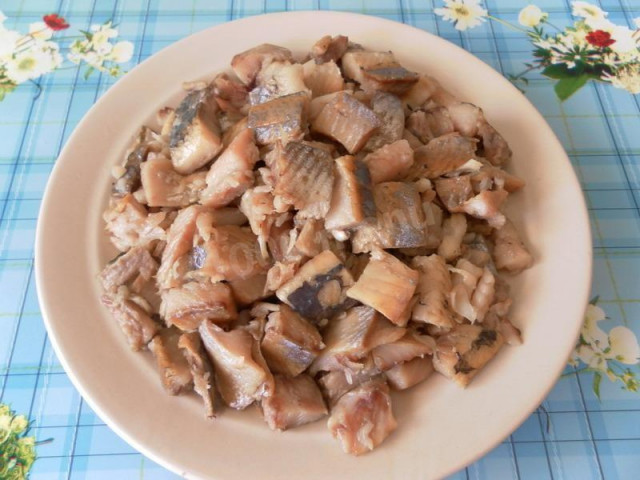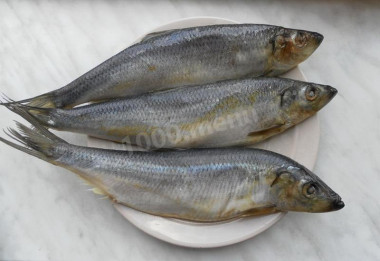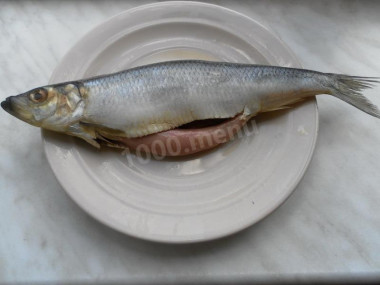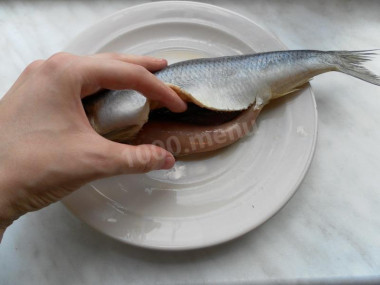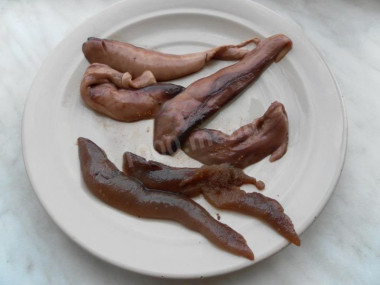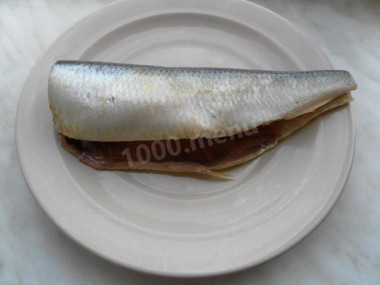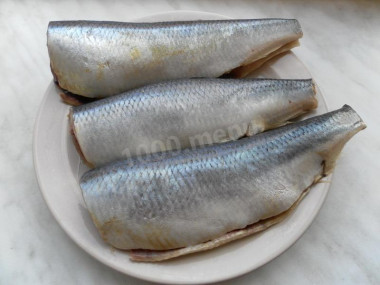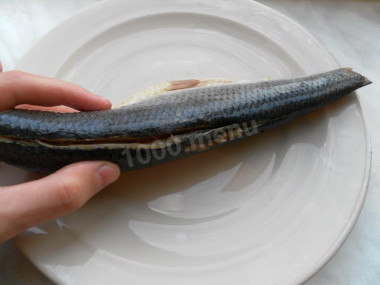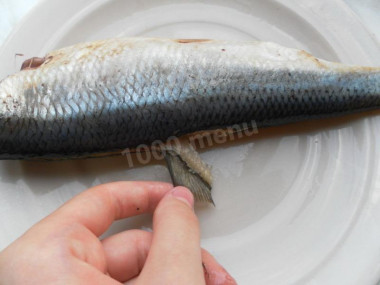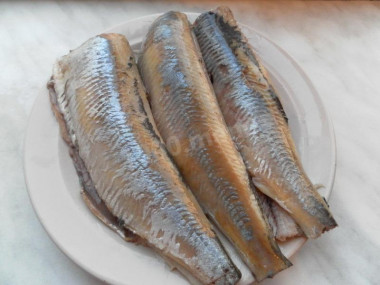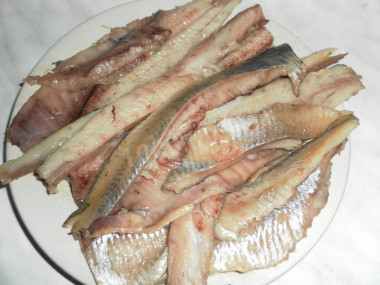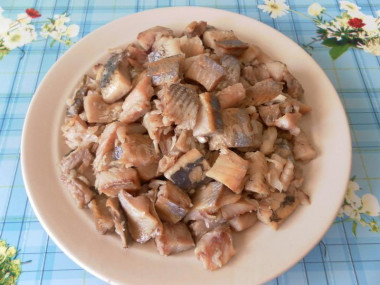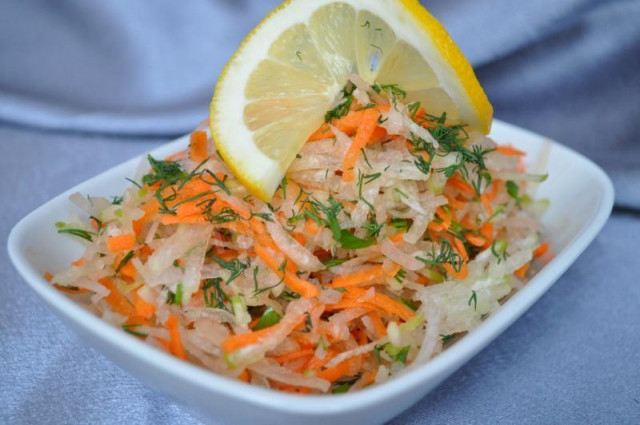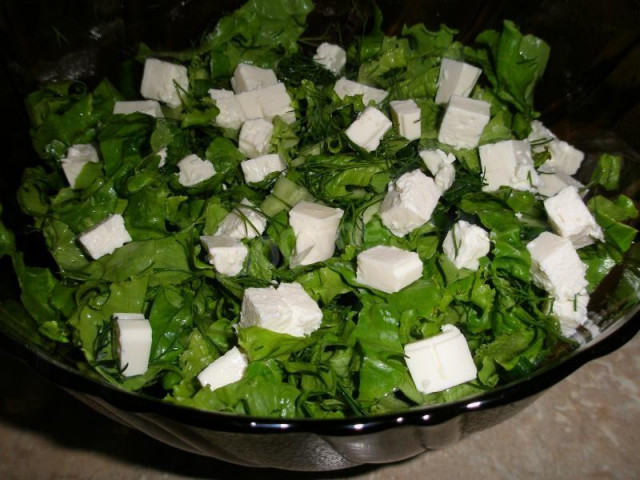Cutting herring into fillets
Composition / ingredients
2
Servings:
Step-by-step cooking
For cutting herring, we will need: salted herring, a cutting board and a sharp knife.
With a knife, we open the abdomen, in the direction from the head to the tail. The incision is carried out to the anal opening.
Take out the caviar or milk and put them aside.
However, many do not eat them and throw them away, but I leave them.
Then we cut off the herring's head and tail fin, carefully clean the abdomen from the entrails.
Now you need to rinse the carcass with running cold tap water, removing the remnants of dark films.
We make an incision along the spine, in the direction from the head to the tail, bypassing the dorsal fin on both sides. Firstly, it will help to remove the skin without any problems in the future, and secondly, thanks to this, we can easily get fins with internal bones. We do the same with the lower (anal) fin, extending the abdominal incision to the end of the carcass.
Remove the fins. To do this, they need to be pulled slightly, they are pulled out very easily.
Picking up the skin with the tip of the knife, slowly, so as not to damage the fillet, remove it towards the tail.
Now the herring can easily be divided into four segments - two upper (dorsal) and two lower (abdominal) fillet strips. To do this, pull the top and bottom of the fish in different directions, thus removing the lower parts of the fillet from the ribs.
Then, using a spinal incision, carefully separate the upper parts, separating them from the spine.
When all parts of the fillet are removed from the ridge, we remove all the small protruding bones from them with tweezers.
Now fillets can be used in the preparation of various dishes and snacks, or simply eaten.
With a knife, we open the abdomen, in the direction from the head to the tail. The incision is carried out to the anal opening.
Take out the caviar or milk and put them aside.
However, many do not eat them and throw them away, but I leave them.
Then we cut off the herring's head and tail fin, carefully clean the abdomen from the entrails.
Now you need to rinse the carcass with running cold tap water, removing the remnants of dark films.
We make an incision along the spine, in the direction from the head to the tail, bypassing the dorsal fin on both sides. Firstly, it will help to remove the skin without any problems in the future, and secondly, thanks to this, we can easily get fins with internal bones. We do the same with the lower (anal) fin, extending the abdominal incision to the end of the carcass.
Remove the fins. To do this, they need to be pulled slightly, they are pulled out very easily.
Picking up the skin with the tip of the knife, slowly, so as not to damage the fillet, remove it towards the tail.
Now the herring can easily be divided into four segments - two upper (dorsal) and two lower (abdominal) fillet strips. To do this, pull the top and bottom of the fish in different directions, thus removing the lower parts of the fillet from the ribs.
Then, using a spinal incision, carefully separate the upper parts, separating them from the spine.
When all parts of the fillet are removed from the ridge, we remove all the small protruding bones from them with tweezers.
Now fillets can be used in the preparation of various dishes and snacks, or simply eaten.
Caloric content of the products possible in the composition of the dish
- Herring in vegetable oil - 301 kcal/100g
- Herring in sour cream - 97 kcal/100g
- Herring in tomato sauce - 159 kcal/100g
- Hot smoked herring - 215 kcal/100g
- Pickled herring - 192 kcal/100g
- Fresh herring - 161 kcal/100g
- Salted herring - 217 kcal/100g

